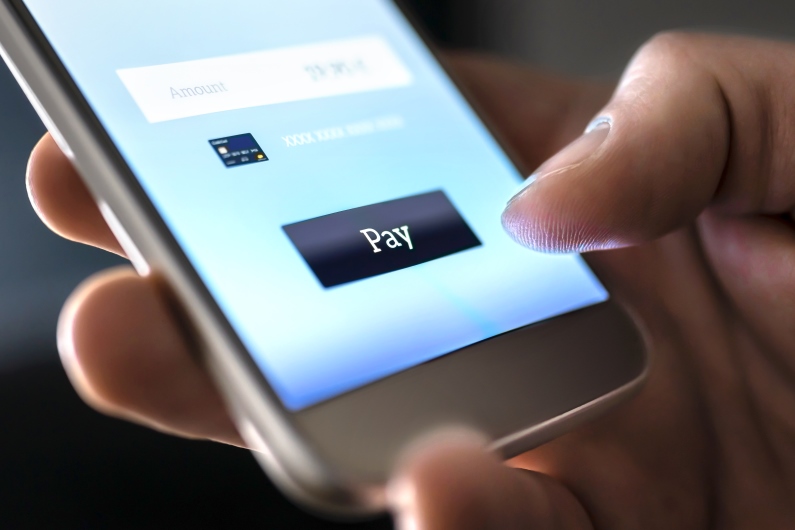
How to Protect Financial Data During Mobile Transactions
Consumers use mobiles device to make payments for mobile banking, shopping, and more. Here's how to protect financial data when making mobile transactions.
Customers want paying for a product or service to be as easy as possible. For many people, that means using their mobile device to make the payment. According to the Global Mobile Payment Methods 2019 survey, one in three global internet users used a mobile device to make a payment.
However, many consumers are reluctant to use mobile payments due to security concerns. A report from The Pew Charitable Trusts found that 30 percent of consumers do not use mobile payments because of concerns about loss of funds. To increase confidence and encourage customers to use mobile payments, businesses must proactively create a secure process and environment. That means educating consumers on how to protect themselves as well as communicating all security measures they've taken.
Safeguards for Businesses to Put in Place
Your customers want to know that you are taking steps to keep their financial data safe. It’s the right thing to do for your customers, but beyond that, keeping data secure also prevents negative media attention and brand damage that can cause significant revenue loss after a breach or theft.
Security-minded businesses should consider a few common safeguards that can help keep their financial data—and their customers—protected.
1. Biometric Verification
When you use biometrics in your payment process, customers must verify their identity using something on their body that’s almost impossible to fake, such as retinal scan, facial verification, or fingerprint or voice recognition. Juniper Research recently found that by 2024, more than 90 percent of all smartphones in use will have facial recognition ability.
While biometric verification adds an extra step, customers are quickly becoming comfortable with this type of security. Retailers are responding to this increased acceptance and adoption. Juniper Research also predicts a 1,000-fold increase in the use of biometrics in mobile payments, from $228 billion in 2019 to $2.5 trillion in 2020. As biometrics becomes standard, customers may choose retailers that use biometrics over those lagging behind.
2. Two-Factor Authentication
Two-factor authentication is when you have to verify who you are using two different methods. Typically, this means a password plus another method, such as entering a code sent through a text message. Because regulations in some countries now require two-factor authentication for mobile payments, companies around the world are increasing the use of this added step. According to the Customer Authentication Practices 2019 report, 60 percent of companies use strong authentication and almost 30 percent are planning to expand or add two-factor authentication.
3. Data Encryption
An increasingly common way to steal data is to intercept it as it’s being sent over the internet. By using strong encryption, companies can keep their customers’ data secure while it is sent from the customer’s device to the company’s server. The way this works is that during transmission the data is converted to an unusable format that is then decrypted when it reaches the destination. If the data is intercepted along the way, the cybercriminal cannot use it.
Educating Customers on Mobile Transaction Safety
While it’s important to do everything you can to keep your customers’ data safe, issues with mobile security can also occur on the customer side. However, often all that customers remember after an incident is that they were hacked or breached while using your payment system. By continually educating your customers on the following safety best practices, you can increase your brand’s reputation and customers’ use of mobile payments:
- Password protect all mobile devices. Customers should use strong passwords that include both upper and lowercase letters as well as numbers and characters. By using unique passwords for all accounts, customers can make their passwords more secure.
- Enable two-factor authentication on their personal device. Many mobile devices let customers set up biometrics such as fingerprint verification. By setting up these safeguards on their phone, customers are more protected if their device is lost or stolen.
- Connect over secure wireless, not public internet. Sending payments over public internet is one of the riskiest behaviors in terms of mobile security. Customers should pay for products only over password-protected and private internet.
- Install all operating system updates. Mobile providers often update their operating system based on newly discovered threats or bugs. By always installing updates right away, customers have the latest protection at all times.
Because customers are constantly presented with information, you must be creative and persistent in educating them. Here are a few creative ways to educate customers on safe mobile payment practices:
- Use popups in your mobile payments system. By reminding people as they are making the payment, you can increase security. You can include a tips box the first time someone signs on to provide education as they are leaning the app. Consider requiring customers to change their password every three months using popups that prompt password changes at regular intervals.
- Head to social media. Create a campaign on your social media to remind people about safe mobile payment practices. Be creative—a funny video or an eyecatching meme can often have the greatest impact. However, be sensitive to the fact that the topic is a serious one, and take care to balance the humor appropriately.
- Encourage customer service reps to talk about best practices. Every time your customers are on the phone with a representative, you have a captive audience. Train your customer representatives to use the opportunity to share a mobile payment security tip.
Security is a top concern for consumers when using mobile payment systems. By proactively working to make the process as secure as possible, customers will likely reach for their phone more often in the future to pay. As customers increasingly make buying decisions based on easy payment processes, you can increase both your revenue and your customer satisfaction by creating a secure mobile payment system.